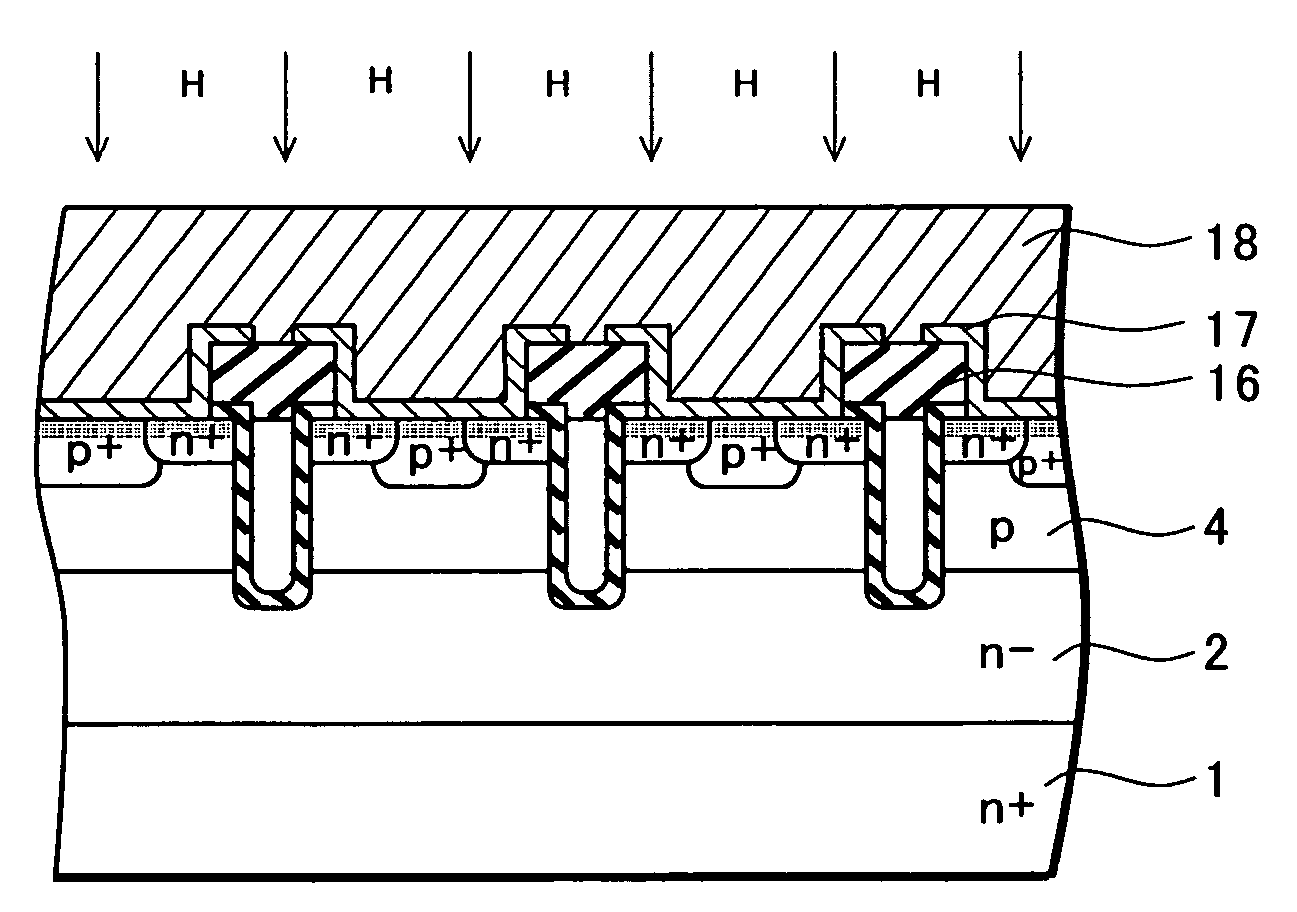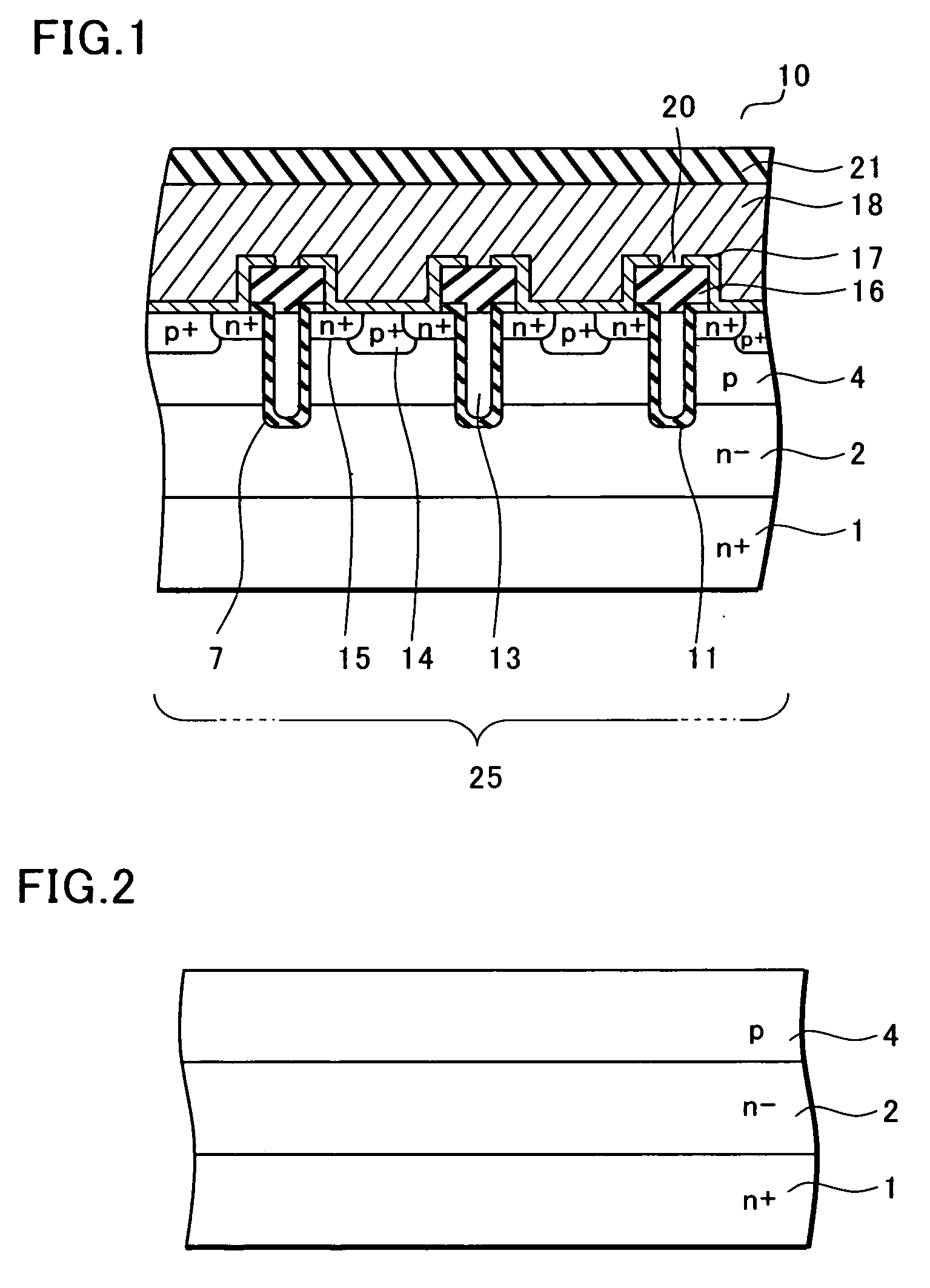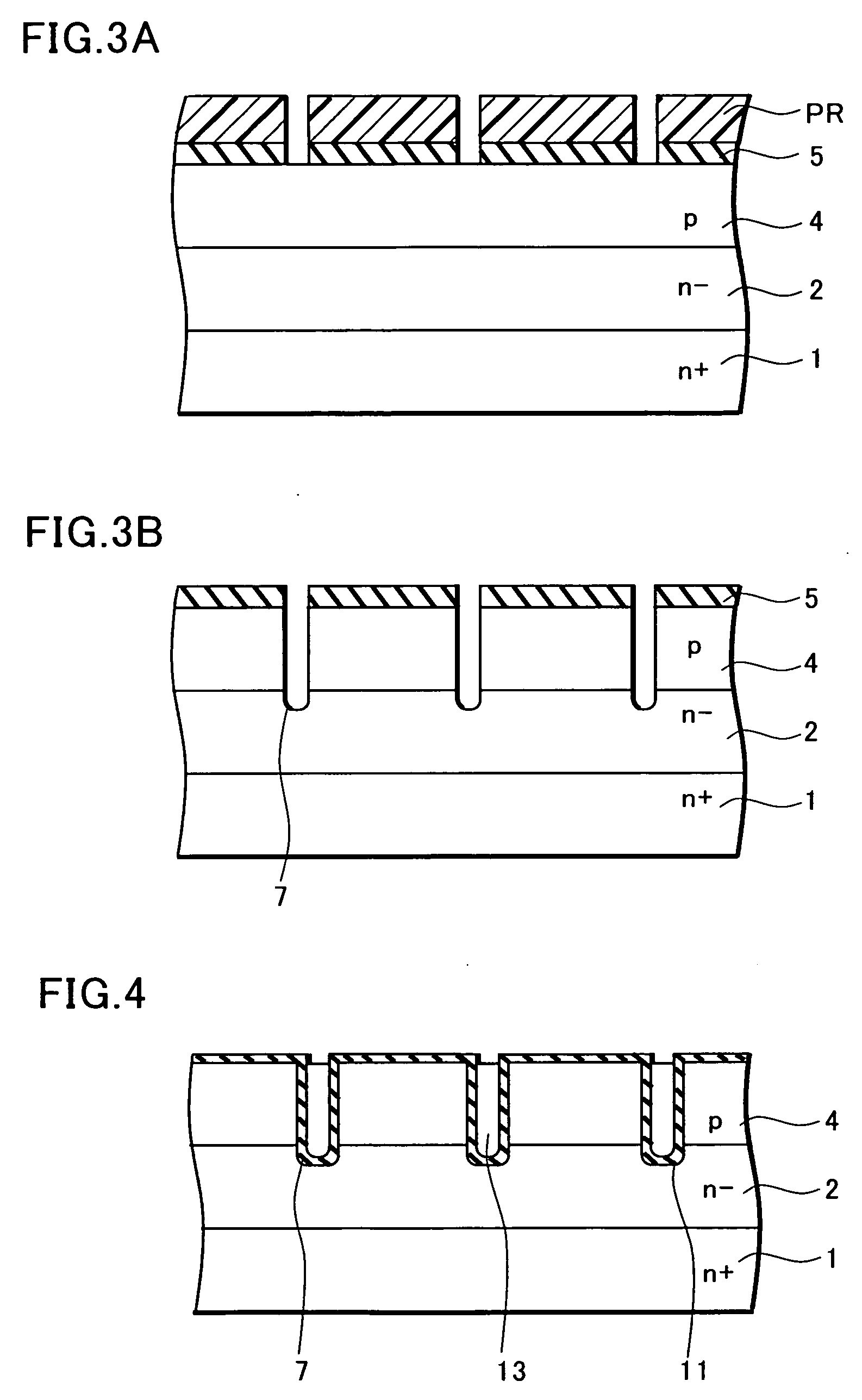Method for manufacturing semiconductor device
a manufacturing method and semiconductor technology, applied in the direction of semiconductor devices, basic electric elements, electrical appliances, etc., can solve the problems of increasing the on-resistance, unable to obtain unable to achieve the desired threshold voltage vsub>gsoff/sub>, so as to improve the characteristics and stability of the element, reduce the on-resistance, and prevent the effect of diffusion caused by heat treatmen
- Summary
- Abstract
- Description
- Claims
- Application Information
AI Technical Summary
Benefits of technology
Problems solved by technology
Method used
Image
Examples
Embodiment Construction
[0049] With reference to FIGS. 1 to 10B, detailed description will be given of an embodiment of the present invention by taking an n-channel MOSFET having a trench structure as an example.
[0050]FIG. 1 is a cross-sectional view showing a structure of a MOSFET 10 of the present invention. The MOSFET 10 includes a silicon semiconductor substrate 1, a semiconductor layer 2, a channel layer 4, a trench 7, an insulating film 11, a gate electrode 13, a source region 15, a body region 14, an interlayer insulating film 16, a first metal layer 17, an opening 20, and a second metal layer 18.
[0051] A drain region is formed by laminating an n− type epitaxial layer 2 on the n+ type silicon semiconductor substrate 1, and the like.
[0052] The channel layer 4 is a region obtained by diffusing p-type impurities on a surface of the n− type semiconductor layer 2. The trench 7 is provided so as to penetrate the channel layer 4 and to have a depth reaching the drain region 2. An inner wall of the trenc...
PUM
| Property | Measurement | Unit |
|---|---|---|
| temperature | aaaaa | aaaaa |
| thickness | aaaaa | aaaaa |
| thickness | aaaaa | aaaaa |
Abstract
Description
Claims
Application Information
 Login to View More
Login to View More - R&D
- Intellectual Property
- Life Sciences
- Materials
- Tech Scout
- Unparalleled Data Quality
- Higher Quality Content
- 60% Fewer Hallucinations
Browse by: Latest US Patents, China's latest patents, Technical Efficacy Thesaurus, Application Domain, Technology Topic, Popular Technical Reports.
© 2025 PatSnap. All rights reserved.Legal|Privacy policy|Modern Slavery Act Transparency Statement|Sitemap|About US| Contact US: help@patsnap.com



